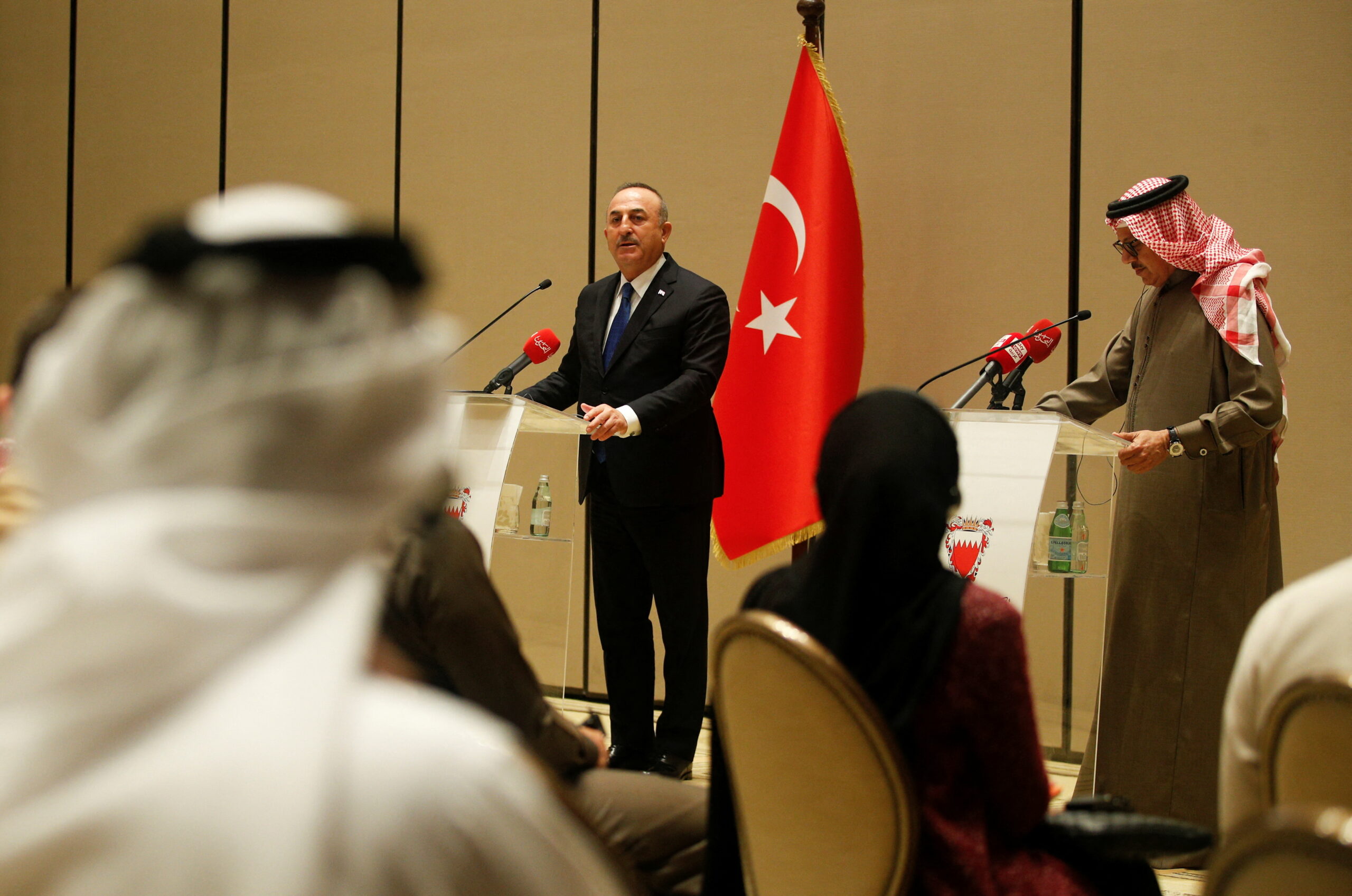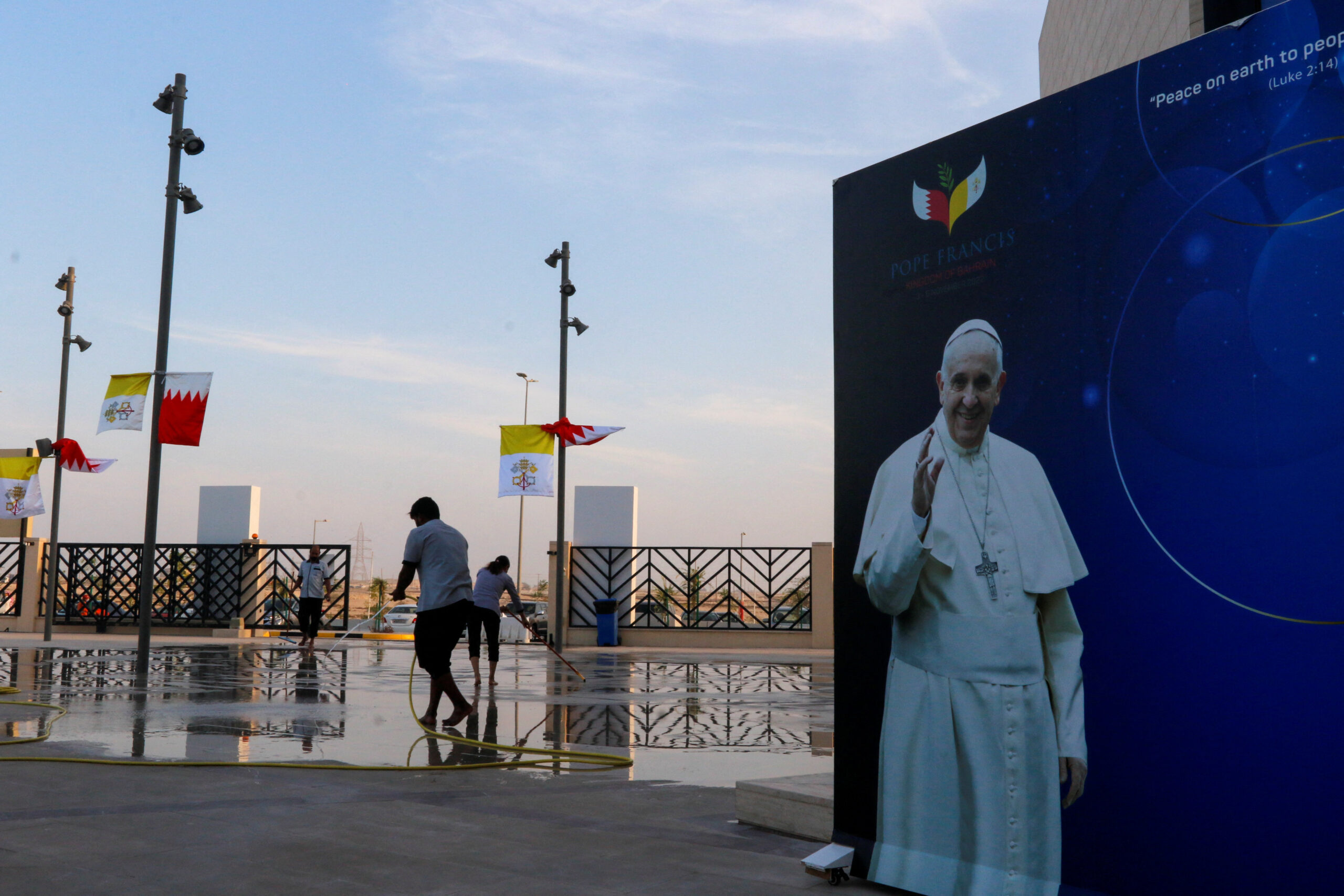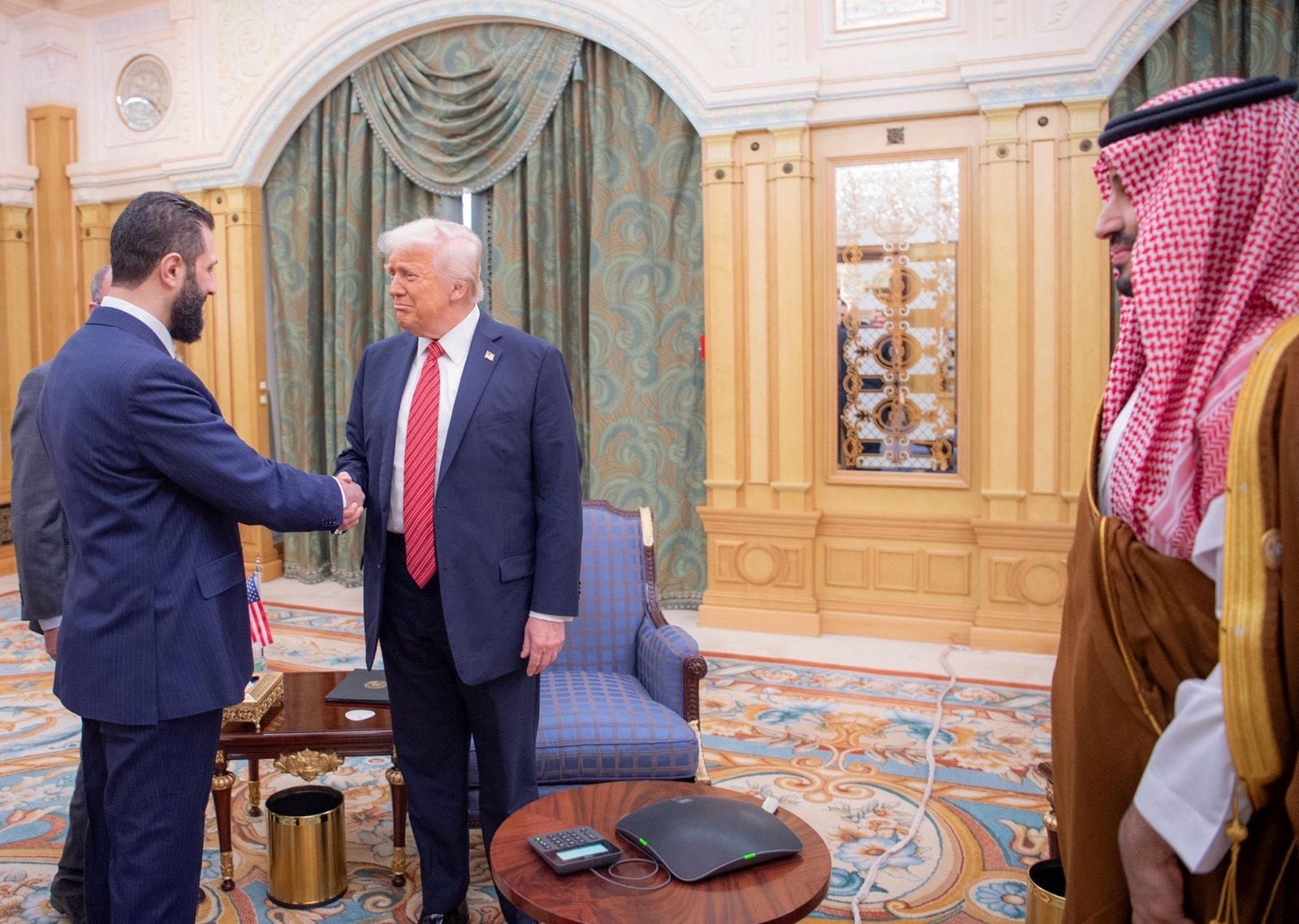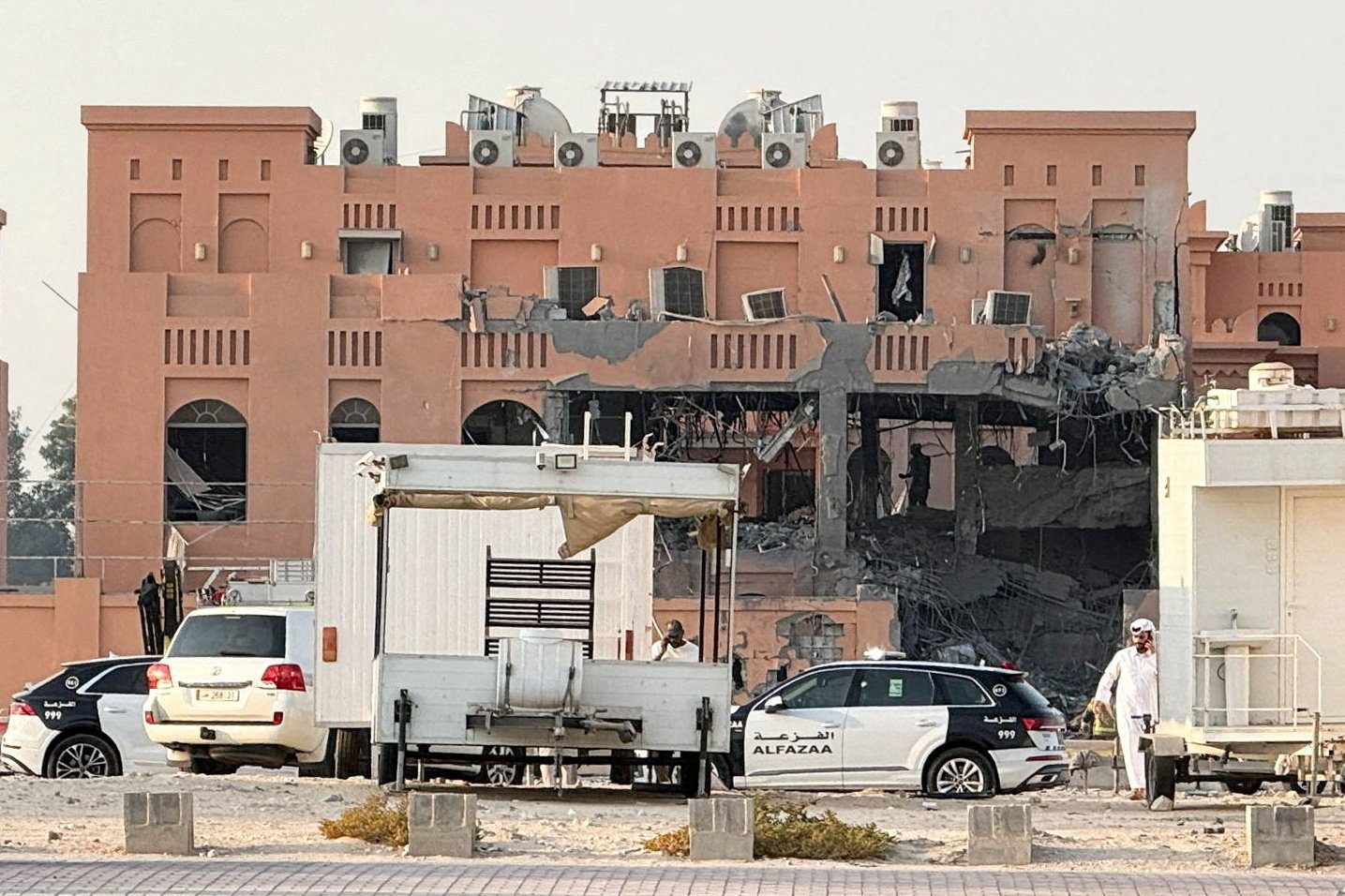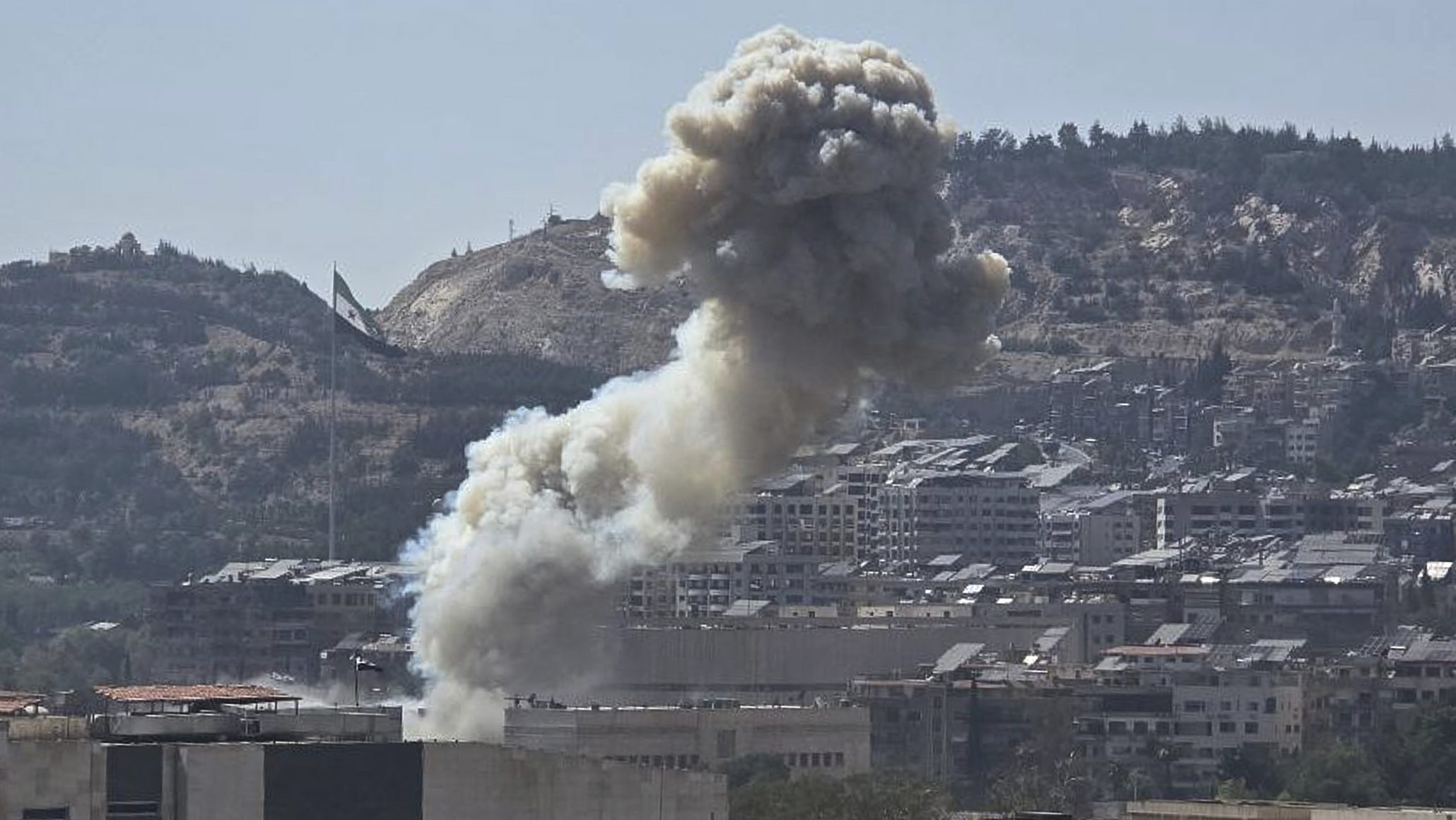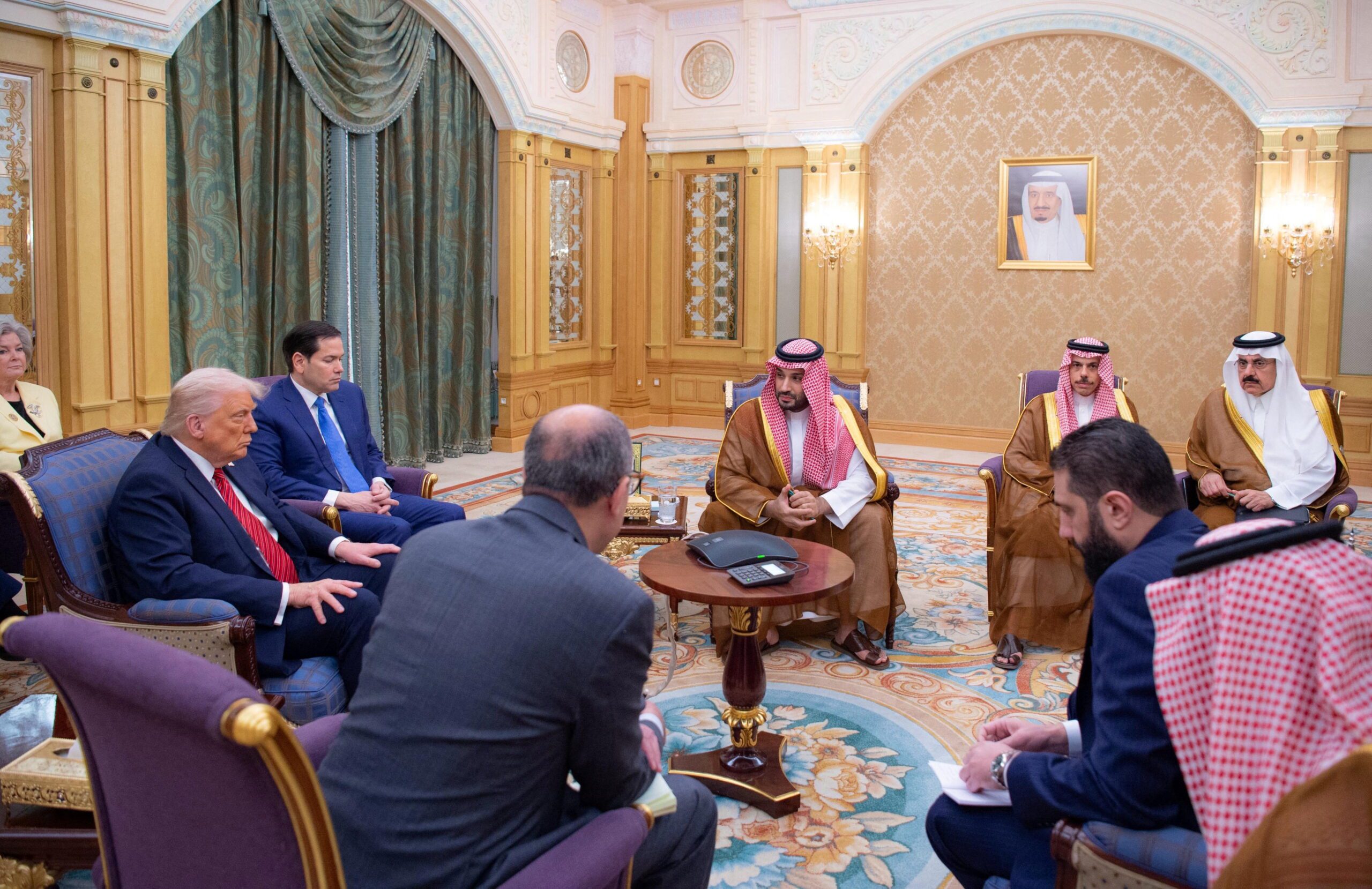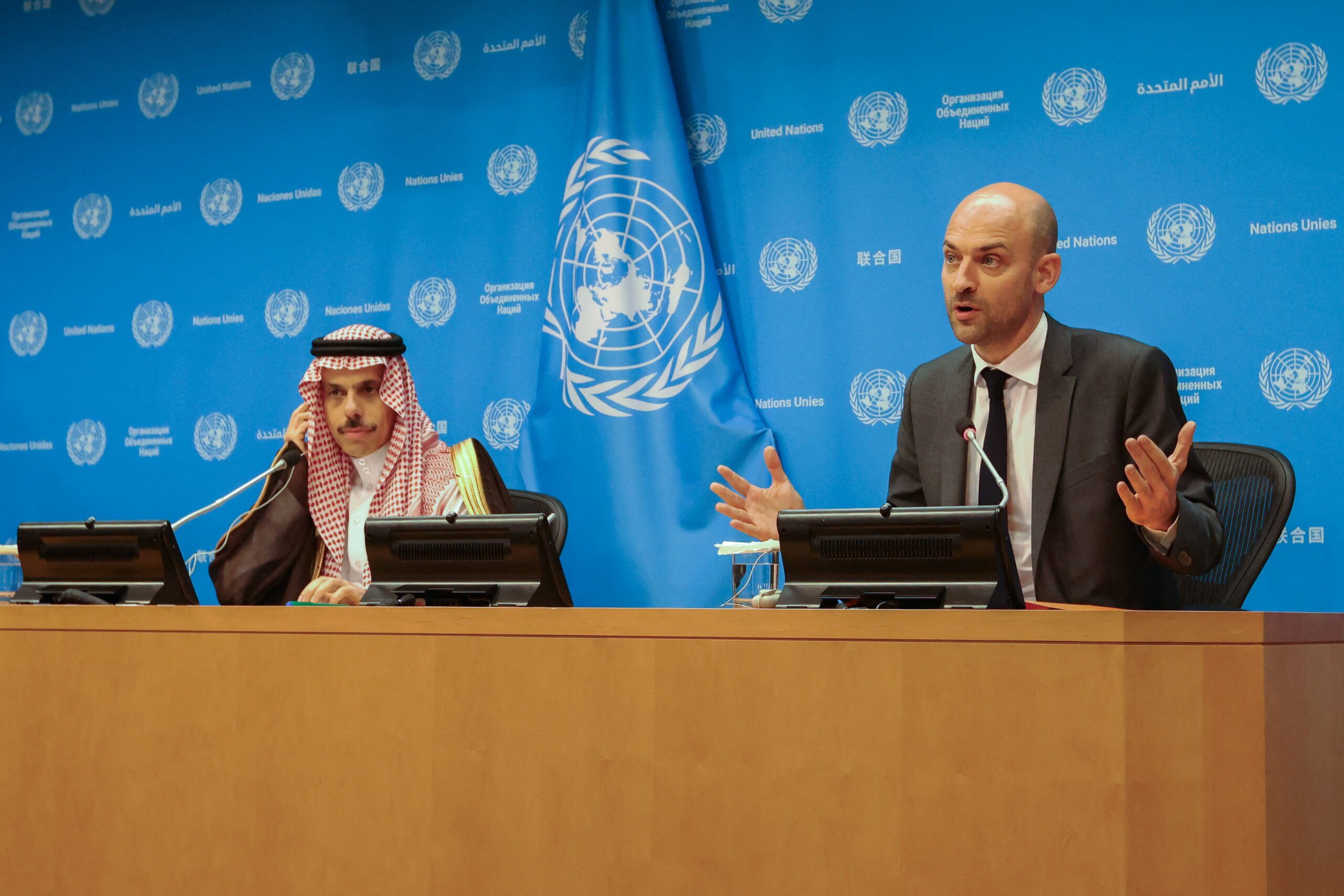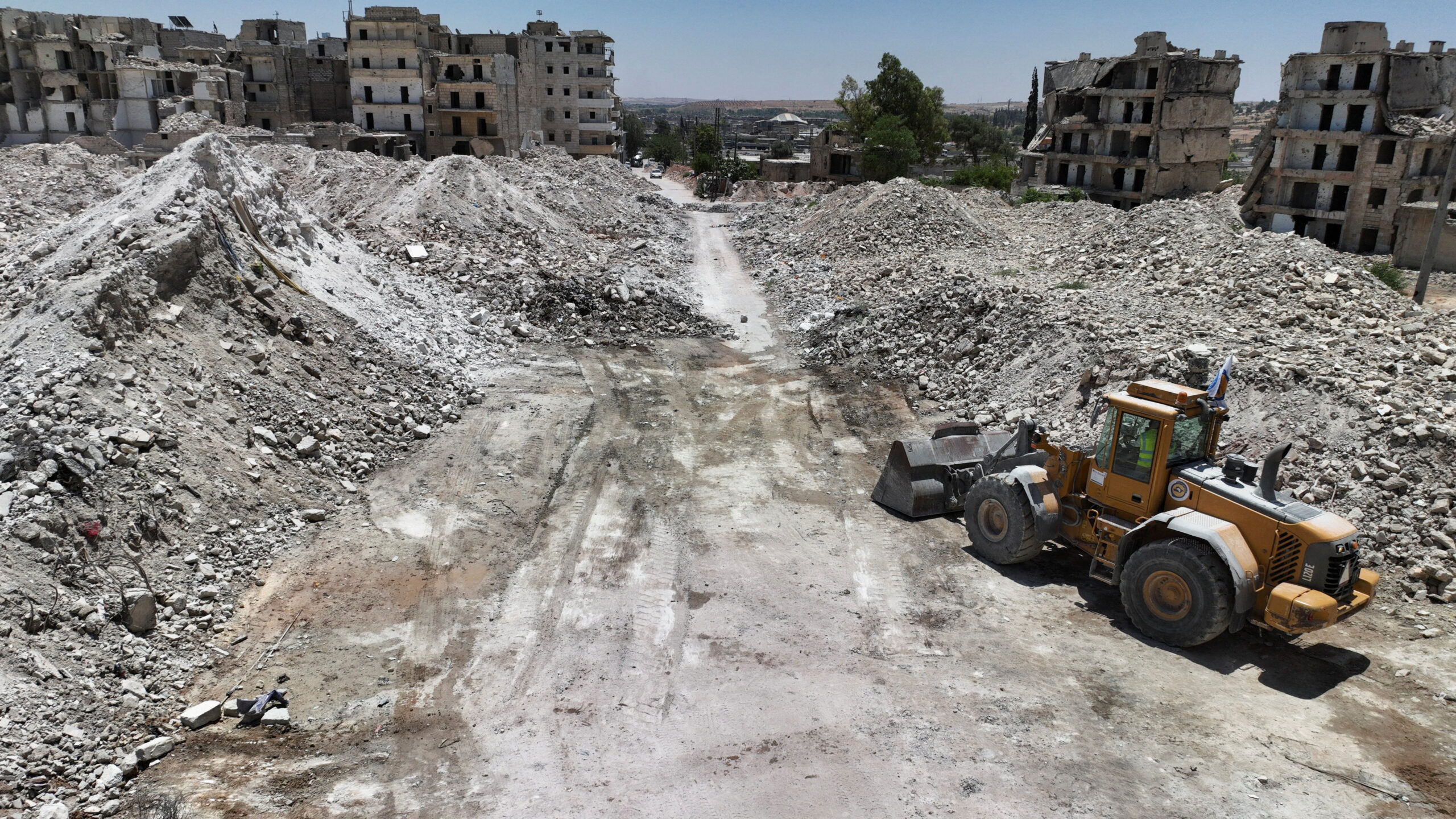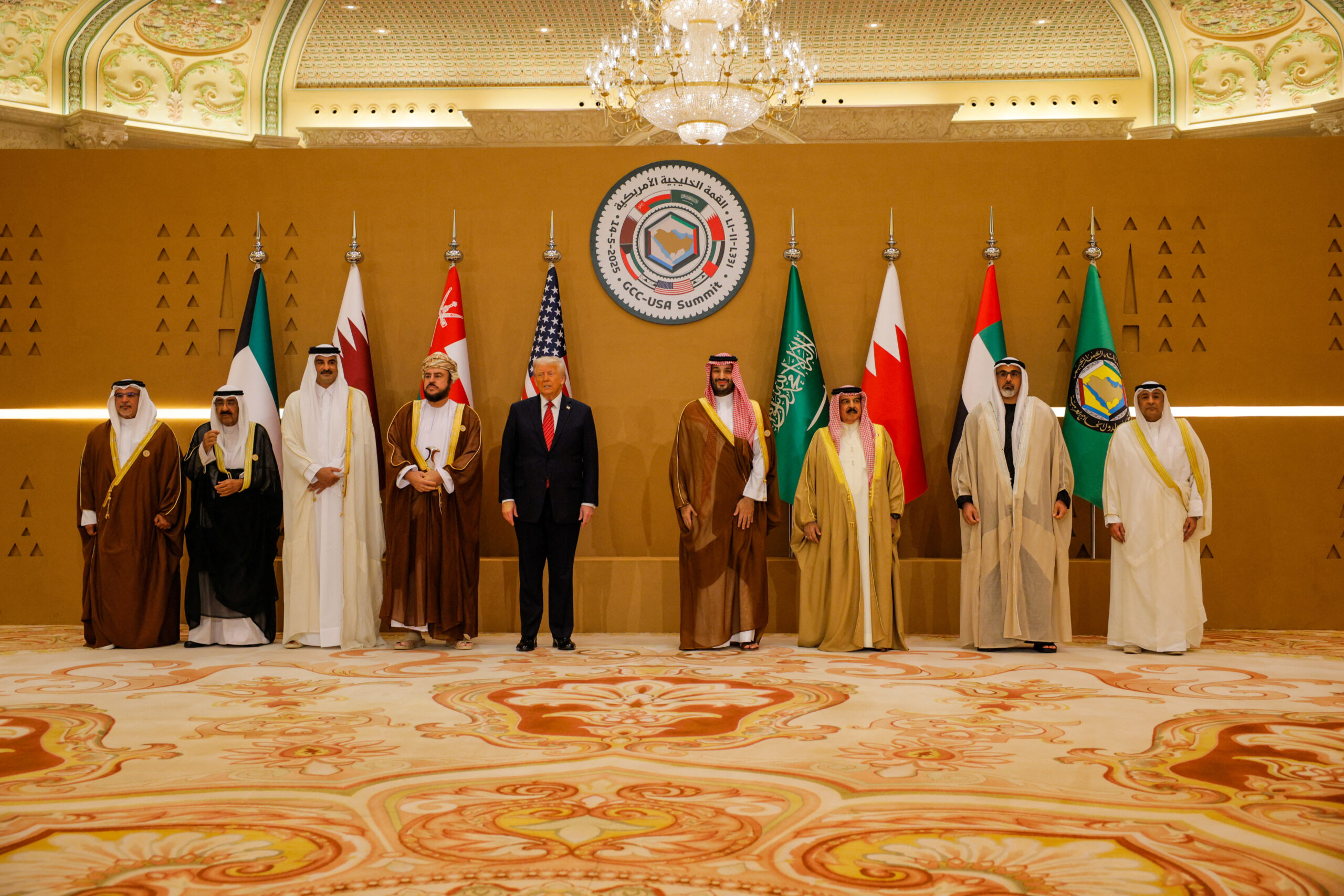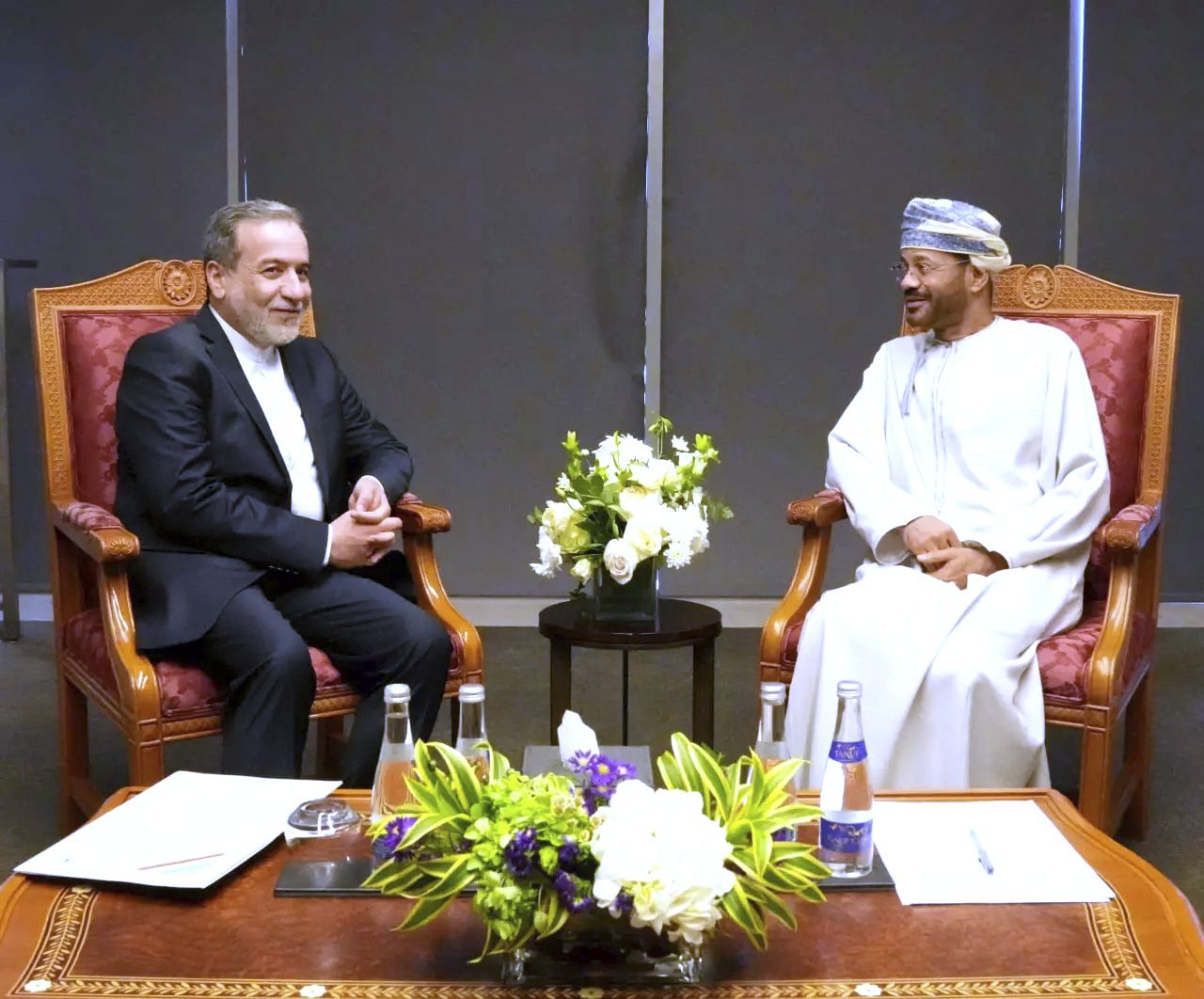Bahrain Sets the Pace for Enhanced Gulf Security Cooperation With the United States
A recently signed security- and economy-focused pact marks the latest development in the United States’ close, long-standing partnership with Bahrain.
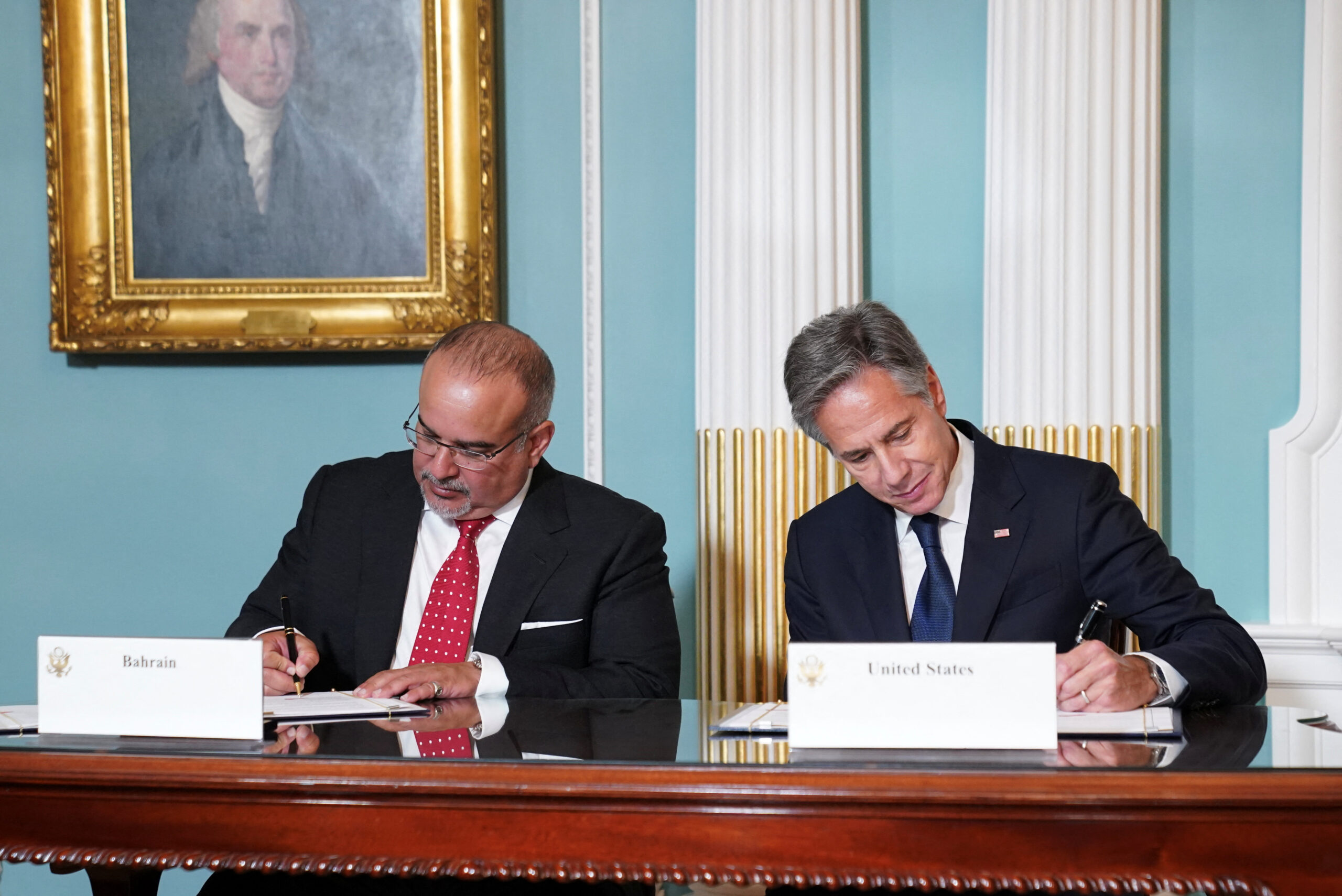
The Comprehensive Security Integration and Prosperity Agreement, signed September 13 by Bahraini Crown Prince and Prime Minister Salman bin Hamad al-Khalifa and Secretary of State Antony Blinken at the State Department, formalizes and tightens security cooperation between Bahrain and the United States. While C-SIPA carefully does not include any NATO Article 5-type mutual defense guarantees, it approaches the water’s edge of such commitments, reinforced by senior administration officials making clear on background that the pact is a legally binding agreement that will be notified to Congress. Such notification is a formal step that nonetheless does not require ratification to enter into force, since the agreement “does not cross the threshold of a treaty.”
The concise, approximately 1,600-word document opens by outlining the scope of its aspirations: to help support “a fully integrated regional security architecture” in the Middle East; to expand the parties’ cooperation on security, trade and investment, and science and technology; and to “bolster mutual deterrence against external threats.” The opening articles also reference the Abraham Accords while making clear C-SIPA is “distinct” from those agreements. While the agreement limits itself to a reference to respect for the purposes and principles of the United Nations Charter, a White House Fact Sheet as well as Blinken, in his public remarks, made clear the issue of human rights remained a U.S. priority and would continue to be a regular part of the strategic dialogue with Bahrain.
The emphasis in the pact, particularly in Article II, is on deterrence, coordination, consultation in the event of any external threat, and de-escalation, in tandem with strengthened security capabilities and intelligence sharing. The White House also underscored that “C-SIPA will help formalize steps being taken by U.S. Central Command to integrate the region’s air and missile defense systems and increase maritime domain awareness.” Those steps, while important, are likely to remain challenging, given the tradition of strong bilateral security cooperation with the United States and correspondingly weaker defense cooperation across Gulf Arab states.
Iran
Neither the agreement nor the White House Fact Sheet specifically references Iran. The senior official speaking on background mentioned Iran at several points, emphasizing the pact was not “directed at” Iran but making clear that it is meant to help deter “threats from Iran,” including Iranian-backed militia groups and the “aggressive nature and tendencies from the Iranians.” The official also acknowledged the recent restoration of diplomatic relations between Iran and Saudi Arabia in a nod to the continuing importance of diplomacy as a part of this security cooperation.
Constructing a “New, More Sensitive Trip Wire” to Deter Adversaries
Some analysts and media outlets have scrutinized the language of Article II, claiming it falls short of a robust mutual defense commitment and minimizing it as merely formalizing existing security commitments. The part of Article II that does elaborate on U.S. obligations is embedded in formal language of mutual obligations and stilted references to the parties: “It is the policy of the Parties to work together to help deter and confront any external aggression.” It also states the two sides “shall … develop and implement appropriate defense and deterrent responses … including in the economic, military, and/or political realms.” One key Bahraini participant in the discussions and visit of the crown prince, perhaps pushing back against the skeptics, made the case that the agreement enshrines “a new, more sensitive trip wire” to deter possible adversaries.
Probably as important as any specific language of security commitment contained in the agreement is the tightly woven series of references throughout the document to U.S. intent to work with Bahrain to strengthen its defenses and security capabilities, improve interoperability, and enhance deterrent capacities, including air and maritime capabilities. The agreement is also a potent reminder of the long history of U.S.-Bahraini joint security cooperation, with a reference to the “decades-long U.S. security partnership with Bahrain’s military forces.” Taken together with the White House Fact Sheet and the background briefing, the pact is also a reminder of how often over the past 75 years Bahrain has led the way in Gulf security (as well as economic) cooperation with the United States, including as the:
- First to host a U.S. naval headquarters for the region, beginning in 1948 (Bahrain currently hosts the U.S. Naval Forces Central Command and the 5th Fleet, with some 9,000 U.S. military and civilian employees).
- First to sign a status of forces agreement, in 1971.
- First Gulf country to receive F-16s, in 1990, and the first, in March, to take delivery of new generation Block 70 F-16s.
- First in the Gulf region to receive major non-NATO ally status, in 2002.
- First Gulf country to partner with the U.S. Navy on integrating unmanned systems and artificial intelligence to establish optimal maritime domain awareness in Gulf waters.
That long history of bilateral cooperation and the catalogue of firsts in Gulf security developments are probably more effective in making clear the United States’ long-standing and continuing commitment to Bahrain’s security than any particular phrasing in a security pact.
Other Gulf Countries Seek U.S. Security Commitments
The text of the agreement, the principals who signed it, and senior U.S. and Bahraini officials all make clear the aspiration that the pact represents a template for enhanced security arrangements with the United States that other countries in the Gulf or wider Middle East can join. Analysts and journalists have expressed skepticism that either Saudi Arabia or the United Arab Emirates, each of which has also been pursuing a binding set of security commitments from the United States, would be satisfied with an agreement resembling C-SIPA. The Saudis, using the leverage of the prospect of normalizing ties with Israel, have reportedly been demanding a mutual defense commitment in terms more closely approximating Article 5 of the NATO treaty. The Emiratis have also made clear their desire for “codified and unambivalent” U.S. commitments to the country’s security.
All these efforts point to broader dynamics long developing in the Gulf but less visible in recent years as Gulf geostrategic views began emphasizing the reality of a multipolar world and the need for strategic diversification away from sole reliance on what came to be seen as a wavering and unfocused U.S. commitment to Gulf security and stability. A steep upward curve over the past decade in Chinese economic power, in tandem with Russia’s Middle East influence and prestige burnished by its decisive 2015 Syria intervention and pivotal membership in the OPEC+ alliance, have reinforced this emphasis on Gulf strategic hedging. These latter developments have ensured that China and Russia made some headway in strengthening relations in the Gulf. They also obscured the long-standing – and still decisive – U.S. security relationships with Gulf Arab countries. The important but limited headway China and Russia have made also underscores the relatively enormous dimensions of U.S. security influence and military prestige in the Gulf, when compared with the modest scope of Chinese and Russian security efforts. The U.S.-Bahrain security pact, and the sustained bilateral efforts to develop security commitments for the UAE and Saudi Arabia, also help clarify how overheated much of the discourse became about the United States losing strategic interest in the Gulf.
Hard questions remain in this sphere. U.S.-Chinese economic competition in the Gulf – and elsewhere – will play out in the coming decades, as will, in a tighter timeframe, U.S. concerns about the compromise of sensitive technology to the Chinese. And the Gulf states will continue to carefully dissect U.S. policy statements, congressional decision making and signal sending, and the overall U.S. political mood, to confirm these reads on the U.S. commitment to Gulf security remain solid. For now, as so often before, Bahrain has gone first and provided fresh evidence that those commitments remain strong.
The views represented herein are the author's or speaker's own and do not necessarily reflect the views of AGSI, its staff, or its board of directors.

